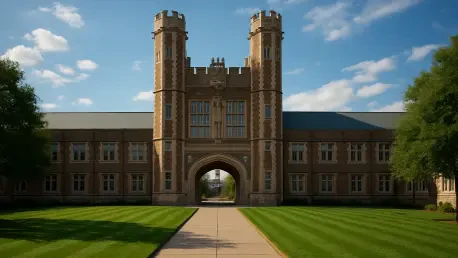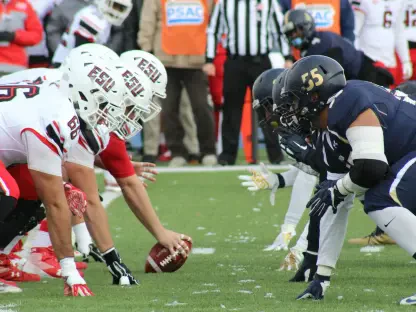As the landscape of higher education continues to evolve, institutions face unprecedented financial and operational challenges. Today, we’re speaking with Camille Faivre, a renowned expert in education management, who has dedicated her career to helping universities navigate complex issues like budget constraints and strategic planning in the post-pandemic era. With her deep insights into e-learning and institutional development, Camille offers a unique perspective on the recent workforce reductions at Washington University in St. Louis. In this interview, we explore the driving forces behind the university’s decision to lay off over 300 staff members, the financial strategies at play, and what these changes mean for the future of higher education.
Can you help us understand the key factors that led Washington University to lay off 316 staff members and eliminate nearly 200 unfilled positions?
Certainly. Washington University’s decision appears to be a response to a perfect storm of financial pressures. First, there’s been a significant drop in federal research funding, which is a critical revenue source for many research-intensive institutions like this one. On top of that, the university is adapting to shifting student needs—think changing enrollment patterns or demands for different academic programs. Additionally, internal inefficiencies and redundancies in operations were flagged as areas to address. These combined factors forced the university to make tough choices to realign their budget and priorities.
How significant was the reduction in federal research funding in pushing the university toward these layoffs?
It’s a major driver. Federal research grants often fund not just projects but also the staff who support them—research assistants, lab technicians, and administrative roles. When that funding dries up, universities face immediate gaps in their budgets. For an institution like Washington University, which has a strong research focus, these cuts likely created a ripple effect, impacting entire departments and necessitating staff reductions to balance the books.
What kinds of changes in student needs might have contributed to this decision?
Students today are looking for different experiences and outcomes from higher education. Some might be shifting toward programs with clear career outcomes, like STEM or professional degrees, while others may be opting for more flexible, online, or hybrid learning models post-pandemic. If certain programs or services at Washington University saw declining enrollment or demand, the university likely had to rethink staffing levels in those areas to avoid overextending resources on underutilized offerings.
Chancellor Martin mentioned ‘ineffective processes and redundancies’ as a reason for the cuts. Can you unpack what that might mean in a university setting?
Absolutely. This often refers to overlapping roles or outdated systems within the university’s operations. For example, multiple departments might be handling similar administrative tasks without coordination, or there could be legacy processes that haven’t been updated to reflect modern technology or efficiency standards. Streamlining these areas—whether through consolidating roles or automating tasks—can cut costs but often means reducing staff, which seems to be part of the strategy here.
The university expects to save $52 million annually from these reductions. How do you think they’re planning to achieve that kind of figure?
That level of savings likely comes from targeting high-cost areas first. Staff salaries and benefits make up a huge portion of university budgets, so cutting over 300 positions, plus nearly 200 unfilled roles, directly reduces payroll expenses. They might have focused on non-academic or support staff roles, or even trimmed in areas like the medical center, where operational costs can be significant. The exact breakdown isn’t public, but it’s a clear signal they’re prioritizing financial efficiency over maintaining current staffing levels.
Do you think these savings could come at the expense of educational quality or student services?
It’s a real concern. When you cut staff, especially in student-facing roles or support services, there’s a risk of longer wait times for assistance, reduced program offerings, or even overburdened faculty and remaining staff. However, if the university is strategic—say, by protecting core academic areas while trimming administrative fat—they might minimize the impact. The challenge is maintaining the balance between cost-cutting and their mission to deliver top-tier education.
Chancellor Martin talked about focusing resources for maximum impact. What might that look like for the university’s future direction?
This likely means doubling down on areas where Washington University excels or sees growth potential—think cutting-edge research in specific fields, high-demand academic programs, or student success initiatives. It could involve reallocating funds to bolster technology for hybrid learning or investing in faculty who drive innovation. The idea is to concentrate resources on what sets them apart as a leading institution rather than spreading funds too thinly across all operations.
Despite having $20.5 billion in assets and a surplus in fiscal 2024, the university still made these cuts. Why do you think such a financially strong institution felt the need to downsize?
Assets and surpluses don’t tell the whole story. Yes, they have a massive endowment, but much of that is restricted for specific uses like scholarships or endowed chairs, not day-to-day operations. Plus, their operating surplus has shrunk by 58% in just a few years, while expenses skyrocketed by 25%. Rising costs—whether from inflation, infrastructure needs, or competitive faculty salaries—can erode even a healthy financial position. These cuts are likely a preemptive move to ensure long-term stability rather than a reaction to immediate crisis.
With expenses jumping by $1 billion in two years, what do you see as the main drivers behind such a sharp increase?
Several factors could be at play. Labor costs are a big one—hiring and retaining top faculty and staff in a competitive market isn’t cheap. Then there’s infrastructure; maintaining or upgrading facilities, especially at a medical center, eats up funds. Technology investments for online learning or cybersecurity are also increasingly non-negotiable. Add to that inflation and potential increases in student financial aid to stay accessible, and you’ve got a recipe for ballooning expenses that outpace revenue growth.
The university managed to break even on its fiscal 2025 budget. How do you think they pulled that off amidst these challenges?
Breaking even suggests some very deliberate financial maneuvers. They likely tightened spending across the board—pausing construction projects, as mentioned, would save significant capital. They might have also deferred non-essential expenses, renegotiated contracts, or leaned on temporary revenue boosts like endowment returns. It’s a short-term win, but it shows they’re willing to make hard calls to avoid deficits, even if it means scaling back on growth plans.
Looking ahead, the chancellor hinted at more changes. What could that mean for staff and students in the coming years?
Further changes could take many forms. For staff, it might mean additional restructuring, possibly more layoffs or shifts to part-time roles if budget pressures persist. For students, it could impact how services are delivered—think fewer in-person support options or consolidated departments. There’s also the possibility of programmatic shifts, where underperforming areas are phased out while others are expanded. It’s about adapting to a leaner operational model without losing sight of their core mission.
What is your forecast for the future of financial management in higher education, given the trends we’re seeing at institutions like Washington University?
I think we’re heading into an era of heightened fiscal discipline across higher education. Universities will need to be more agile, focusing on diversified revenue streams—whether through partnerships, online programs, or philanthropy—while keeping a tight grip on expenses. The challenges of declining federal funding, rising costs, and changing student expectations aren’t going away. Institutions that can innovate in how they operate, like embracing technology or streamlining processes, will thrive, but it won’t be without tough decisions like the ones we’ve discussed today. Long-term sustainability will be the name of the game.









